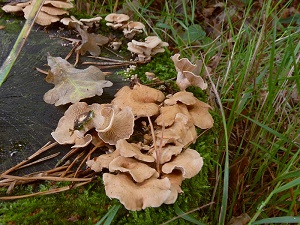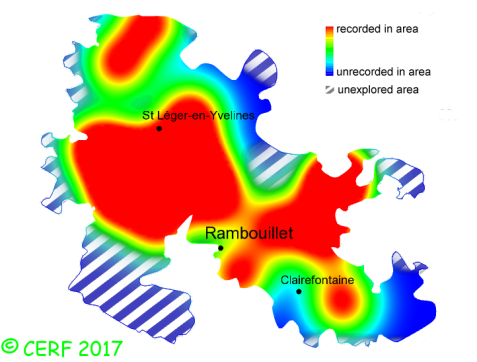| Panellus stipticus (Bull.:Fr.) P. Karst. |
|
|
|
|
|
|
The cap is beige-brown, clay-brown to cinnamon, kidney-shaped or shell-shaped slightly convex but depressed at the attachment point; its margin is inrolled at first, then wavy, slightly furrowed. The cap surface is matt, felty-scurfy, sometimes banded, without any gelatinous film, a bit sticky. The stem is concolorous with cap or paler, lateral, short and sometimes even rudimentary, smooth, broadening at the top to form a kind of fan, without ring. The flesh is white to pale ochraceous, unchanging; its taste is bitter, astringent then acrid after a while; the odour is faint or fruity; its texture is fibrous, sticky, elastic. The gills are light brown to cinnamon, concolorous with cap, adnate-decurrent, interveined, partially forked, crowded but thick . The spore print is white. This species is saprophytic. It grows on dead wood, in dense clusters, on stumps or dead deciduous wood, preferably on oak. The fruiting period takes place from January to March.
Chemical tests : none. Distinctive features : cinnamon-brown cap, kidney-shaped or shell-shaped; lateral stem, short or rudimentary, broadening towards the top to form a kind of fan; crowded gills; pungent to bitter flesh, then acrid; in dense groups on oak stumps Panellus stipticus is occasional and widely present in the forest of Rambouillet, and is frequent, more generally speaking . | ||
|
page updated on 14/01/18

